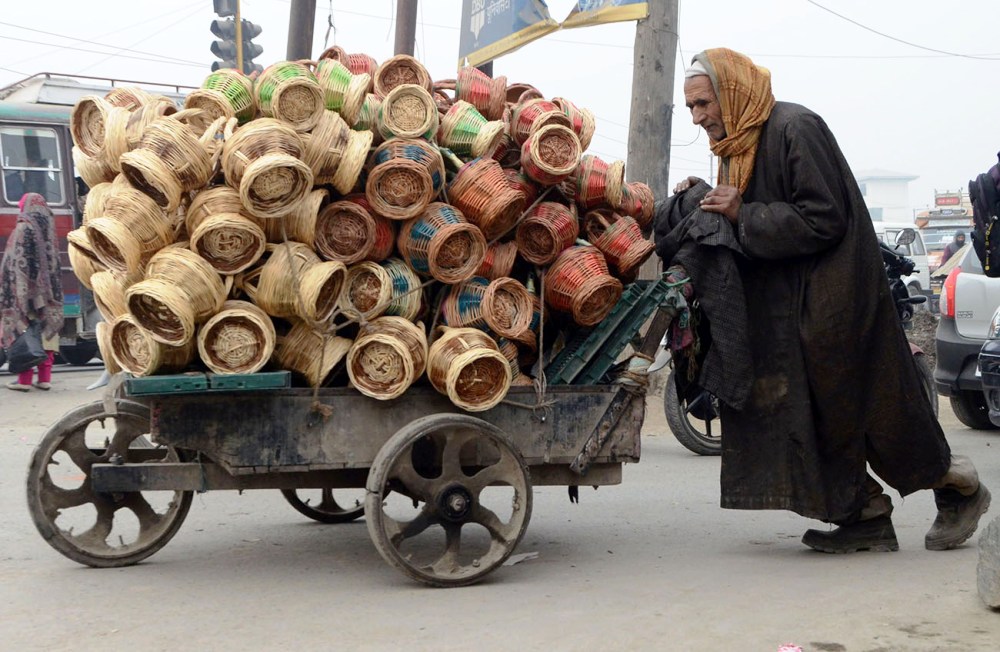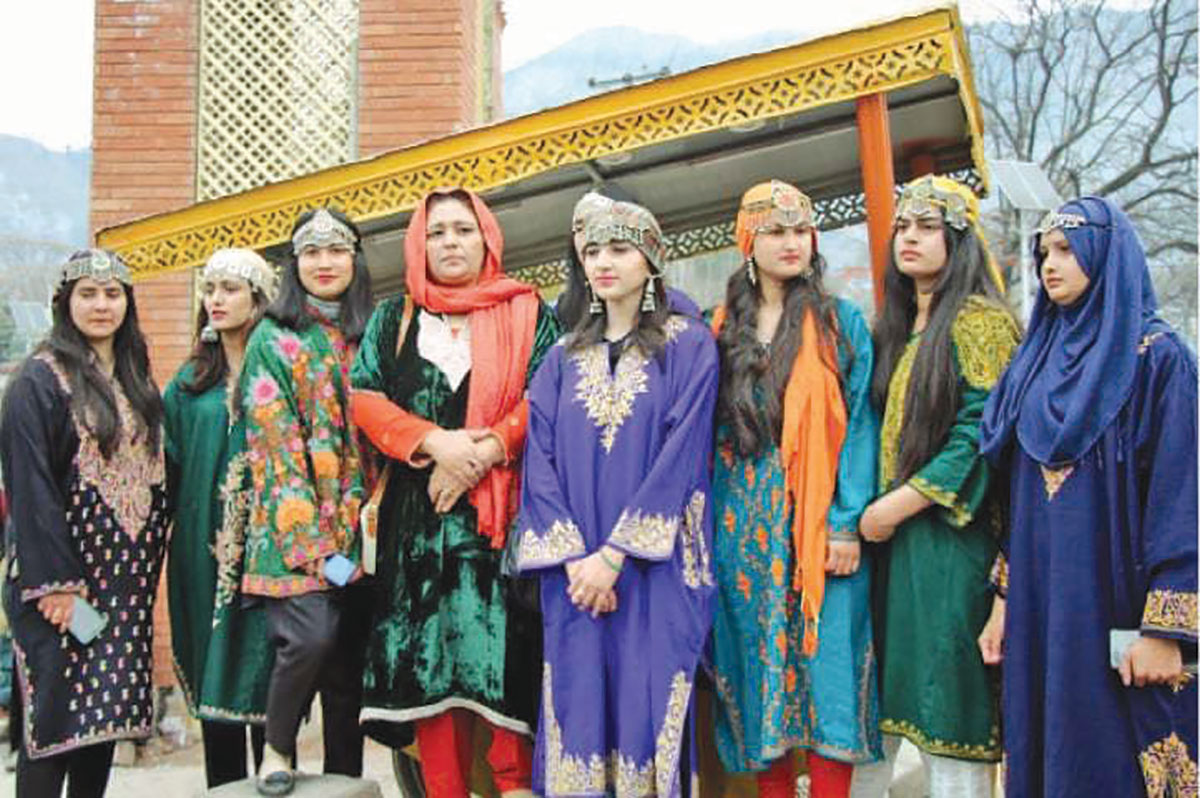With power load shedding a routine in water-abundant Kashmir, the people still require alternatives to keep their homes well-lit and warm. This is offering Kashmir a seasonal business, reports Syed Shadab Ali Gillani

Come winter Kashmir’s priorities shift. It is the home light and a warm house that becomes basic to Kashmir’s chilling winter months. Ideally, electricity is the only solution.
In water-abundant Kashmir, however, electricity is in short supply and the load shedding is routine. Despite the Kashmir Power Development Corporation Limited (KPDCL) issuing a winter schedule for metered and non-metered areas, unforeseen and prolonged power outages are the new norm.
This has pushed people to hunt for alternatives. Over the years, Kashmir has developed various coping techniques and mechanisms to manage its ‘fading light’ syndrome. This has emerged as a good business.
The Alternatives
Storing energy with the use of inverters is very common across Kashmir. Farooq Ahmed Bhat, who promotes Sunshine Lights in Srinagar, said the demand for inverters has surged, with an average sale of around 1000 pieces per season at his outlet. Buyers, predominantly from areas outside Srinagar, seek refuge in inverters to navigate the blackouts caused by frequent load shedding.
An electronics dealer from Srinagar reports a steady growth in inverter sales, particularly in 2023, surpassing the figures from the previous year.
Off late, Farooq notes a growing shift towards solar panels, highlighting a substantial increase in demand. In 2013, solar panels made their debut in Kashmir, and now, their demand surpasses that of inverters and generators. To cater to areas experiencing heavy snowfall, a larger panel is recommended for enhanced backup. “If you have two batteries in your house, and you install a 600-watt panel, it will be more successful,” Farooq suggests.
The government’s role in promoting solar energy is acknowledged, albeit with a clarification on subsidies. While the government provides a subsidy of around 40 per cent for solar rooftop installations; it is specifically for the panel and not the battery. The Deputy CEO of Jammu and Kashmir Energy Development Agency (JAKEDA), MA Malik, underscores the government’s subsidy scheme for residential purposes under the grid-connected solar rooftop initiative.

PHOTO BY BILAL BAHADUR
“As far as power generators go,” Fazl Shafi, a Srinagar-based dealer, explained, “there is a seasonal boost in sales during the winter months, averaging around 150 pieces a month. However, I have observed a gradual decline over the years. It appears to be linked to a decrease in customers’ purchasing power, with most opting for financing over cash transactions.”
Srinagar resident, Inayat Ahmed highlights the affordability challenges faced by lower-income families, leading them to resort to lantern lights or bulbs during power cuts. The market for lantern lights and bulbs is substantial, with claims of sales reaching around 5 lakh rupees and 2 lakh rupees, respectively.
A lot of families and the hospitality sector use smart electric blankets, which reportedly consume less power. Unlike electricity-powered room heaters, the blanket market is better. A trader who used to sell room heaters said against a sale of Rs 15 lakh in 2022, his heater turnover has fallen to less than five lakh rupees. The nosedive is linked to the mass metering of consumer points and a harsh campaign to seize the tolls that consume too much electricity.
The Hammam
Interestingly, however, the electric Hammam is gaining popularity. Shahid Rashid, the manager at Pro-Warm India, a company specialising in installing electric Hammam admitted that people are accepting the technology. “If we put on electric Hammam for two hours, it provides a substantial heat backup of six hours on average,” explained Rashid. “It consumes power at 15-18 watts per square foot.”
Rashid said making society accept the technology it was unfamiliar with took a bit of time. Now, he said sales are on a positive trajectory. Through a referral system and offering free Hammams initially, the company has now reached a point where they receive around fifteen orders daily.

Mohammad Shafi, who installed such a Hammam in Srinagar, said he did this because it was convenient, and saved time compared to the traditional Hammam construction, as his ailing father required it on an urgent basis.
Since this peculiar Hammam is also dependent on the electricity supply, most people go with the traditional system. “It is in your control, you have the fuel wood, we have everything,” a doctor explained. “This year, I removed all the geysers in my six bathrooms. I installed a huge boiler and it is powered by Hammam hearth that keeps my bathak warm and supplies hot water to all washrooms, kitchen and laundry.”
Owning a traditional Hammam was expensive because the builders would use peculiar stone slabs for different purposes and it was a huge amount. Things seem, to have changed now. “I hired a small start-up that gave me a Hammam within a fortnight at less than half of the cost the traditional Hammam would require,” a senior professor said. “They use stone sheets of different thicknesses and it is working fine. The stone is local.”
Most of the new homes that come up in Srinagar essentially have inbuilt heating systems that do not require electricity. Hammam is a new must now.
Kangri Power
Despite technological advancements, traditional methods continue to remain the priority. Pulwama resident, Abdul Hameed expressed the indispensability of the Kangri (Portable Fire Pot) in Kashmir. “Kangri is superior to even the most advanced weather-fighting equipment,” he asserted.
“Despite the prevalence of modern heating devices, the Kangri holds a unique charm for many Kashmiris,” explained Mushtaq Ahmad Sofi, a resident of Baramulla. “The Kangri-Pheran combination, in particular, is effective and affordable.” There are quite a few homes, mostly in Srinagar, where Kangri may not be around.

Pheran has emerged as a fashion statement so the people who do not use it at home, wear it when they are at work. Ahsan Farooq, owner of A2Zee Readymade garment shop, noted the consistent demand for modern coat-type Pherans, with an average sale of 100 to 200 pieces per season, each priced between Rs 1500 to Rs 2000. The blend of innovation and tradition reflects the dynamic ways in which Kashmiris navigate the winter cold, ensuring warmth and cultural continuity.
Power Dynamics
All these interventions would co-exist with the electricity. Officials attribute the mess to Aggregate Technical and Commercial (AT&C) losses, which are highest for Jammu and Kashmir. Against the national average of 19.73 per cent, Jammu and Kashmir’s AT&C losses surpass 50 per cent.
Besides, they point out that energy consumption within Jammu and Kashmir, goes up by 8-10 per cent over the previous year, every season. Additionally, they believe that the amplified energy needs of Jammu and Kashmir are a result of improving living standards and the escalated utilisation of electrical and electronic appliances.
The Frustration
With commoners facing the music, it is political and business talking about the mess almost on a daily basis. The Kashmir Chamber of Commerce and Industry linked the power crisis with “unreliable and contradictory policies” adopted by the administration. It even wrote a letter to Lt Governor Manoj Sinha urging personal intervention to ensure a stable power supply to crucial business sectors. Similar statements were issued by other trade bodies including the Kashmir Trade Alliance (KTA) and CCIK.
Political leaders continue to talk about the issue every time they speak their minds. “One of the worst power crises in Kashmir has left the residents upset with power outages of 8-10 hours per day across Kashmir,” JKNC leader Ali Mohammad Sagar said. “The gravity of the situation demands swift and effective measures to alleviate the distress caused by the power crisis in Kashmir.”
Hopes and Hoaxes
Last time the officials said the metering would improve the situation and there would be no power cuts as is the case outside Jammu and Kashmir. Now, KPDCL officials insist they see hope in later 2025 when the Revamped Distribution Sector Scheme (RDSS) is fully operational. RDSS is a centrally sponsored financial help that the Government of India is providing to distribution companies for strengthening supply infrastructure. The twin distribution companies in Kashmir and Jammu are entitled to get Rs 2300 crore and ensure the AT&C losses reach the national average.
Insiders in the government said they are making plans to ensure they stick to a 4-hour halt in the supplies but it will take some time.















